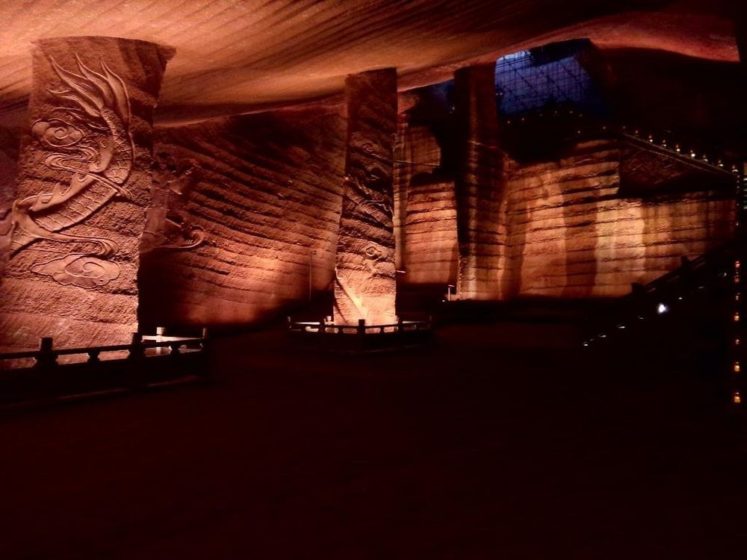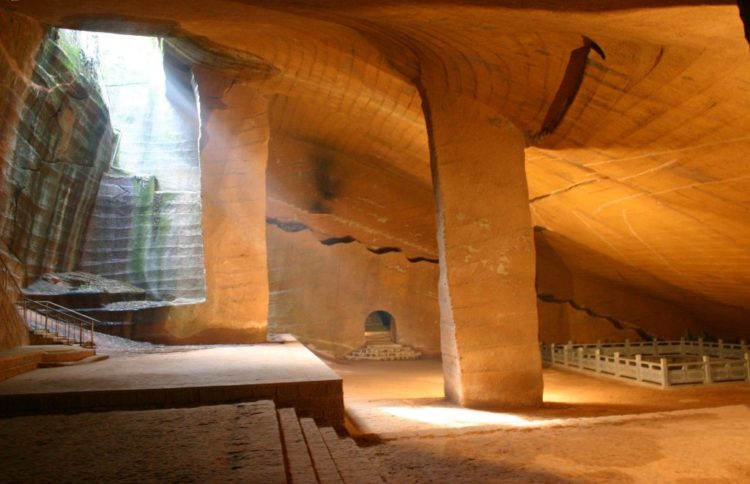Longyou Caves are located near the village of Shiyan Beicun in Zhejiang province.
This is an extensive, magnificent, and rare ancient underground world considered in China. An enduring mystery that has perplexed experts from every discipline that has examined them. In 1992, an eccentrically curious man named Wu Anai, near the Chinese village of Shiyan Beicun in Longyou County. Based on a hunch, he started to pump water out of a pond in his village. He had a strong belief the pond wasn’t natural, nor was it substantially deep as the local lore went, and one day he stepped up to decide to prove it.
Anai convinced some of his villagers and together they bought a water pump and started to siphon water out of the pond. Therefore, after an exorbitant hard work of 17 days of pumping, the water level fell enough to disclose the flooded entrance to an ancient, man-made cave, confirming Anai’s suspicion.
This discovery has called the attention of many specialists from China, Japan, Poland, Singapore, and the USA. One of the most interesting and challenging questions is how the caverns have been able to keep their integrity for more than 2000 years.
This cave, now called the Longyou Caves represents one of the largest underground excavations made during ancient times. A total of 24 hand-dug caves were ultimately discovered, each with an average floor area of a thousand square meters and ceilings that reaches heights of up to 30 meters.
The cave’s total area covered exceeds 30,000 square meters. We know the caves are not natural because the interior walls are covered with chisel marks. The chiseling was also done in a way so as to leave uniform patterns of parallel grooves which some people rely on are symbolic. Moreover, the markings are alike to those found on pottery housed in a nearby museum, which is dated between 500 and 800 BC. They are also staircases, pillars, and exquisitely carved figures.
According to some approximation, the caves were dug more than 2500 years ago, possibly in 200 BCE. A rough estimation reveals that approximately a million cubic meters of rock were removed to make the caves. This was a mega project so large would surely have been mentioned by historians and travelers, but no documents at all have been found, which is particularly odd considering the ancient Chinese were meticulous record-keepers.
However, one cannot rule out the possibility that the ancient cave builders were just enlarging an existing natural cave which would explain a lot of things, such as how they were constructed and what happened to the excavated rocks.
Nevertheless, the excavation of the caves was a monumental project executed by man and will continue to be a lasting mystery. At present, there is no explanation for their existence. They represent one of the largest underground excavations of ancient times. They are considered by the Chinese to be the ‘Ninth Wonder of the Ancient World’.
Read More Red Ravine! Rare Geological and Botanical Reserve in Romania














